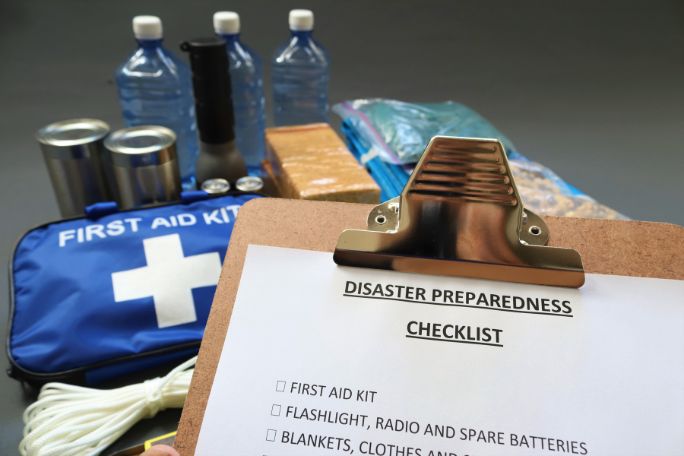Lesson summary
Students evaluate the Queensland and NSW floods to explore the different impacts and responses to a hydrological hazard. Students will work together to create a disaster-ready plan for their classrooms and home.
Learning intentions:
Students will...
- identify the different ways that disasters can affect people
- recognise the importance of having a disaster-ready plan at school and at home.
Success criteria:
Students can...
- create a disaster-ready plan for their classroom and their own home.
Lesson guides and printables
Curriculum links
Select your curriculum from the options below.
Lesson details
Curriculum mapping
Australian Curriculum content descriptions:
Year 7 English:
- Causes, impacts and responses to an atmospheric or hydrological hazard (ACHGK042).
- Strategies used to enhance the liveability of places, especially for young people, including examples from Australia and Europe (ACHGK047).
Year 8 Geography:
- Evaluate sources for their reliability and usefulness and select, collect and record relevant geographical data and information, using ethical protocols, from appropriate primary and secondary sources (ACHGS056).
Syllabus outcomes: GE4-2, GE4-3, GE4-7.
General capabilities: Literacy, Critical and Creative Thinking, Personal and Social Capability.
Cross-curriculum priority: Sustainability.
Relevant parts of the Year 7 achievement standards:
Students understand that the environment has its specific hazards. ‘Place and liveability’ focuses on the concept of place through an investigation of liveability. It develops students’ ability to evaluate the liveability of their own place and to investigate whether it can be improved through planning.
Relevant parts of Year 8 achievement standards:
By the end of Year 8, students explain geographical processes that influence the characteristics of places and explain how places are perceived and valued differently. They explain interconnections within environments and between people and places and explain how they change places and environments. They compare alternative strategies to a geographical challenge, taking into account environmental, economic and social factors.
Time required: 120 minutes (best completed over a number of lessons).
Level of teacher scaffolding: High – facilitate small group work and class discussion, invite a guest speaker and monitor homework.
Resources required
- Index cards for the “Take note” activity
- Post-it notes for the post-it parade activity
- Poster paper for small groups to prepare a classroom emergency plan
- Student Worksheets – one copy per student
- Your school’s emergency plan (and possibly a guest speaker from within the school)
Skills
This lesson is designed to build students’ competencies in the following skills:
- Communication
- Community engagement
- Critical thinking
- Empathy
- Flexibility
- Global citizenship
- Initiative
- Problem solving
- Social skills
- Collaboration
Additional info
We encourage you to undertake the free PD Course How to teach a unit on fire and flood resilience for tips on how to best deliver this lesson.
If you’re concerned about the challenging nature of these topics, consider the free PD Course How to approach trauma in the classroom for information on how best to support your students.


Welcome back!
Don't have an account yet?
Log in with:
Create your free Cool.org account.
Many of our resources are free, with an option to upgrade to Cool+ for premium content.
Already have an account?
Sign up with:
By signing up you accept Cool.org's Terms and Conditions(Opens in new tab) and Privacy Policy(Opens in new tab).